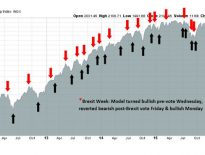Penny Stock Portfolio – Part 1

Today’s post is the first ever guest post here on 7 Circles.
It’s by Trader Tim, who has his own blog here. You can also find him on Twitter here.
The views expressed in the article below are Tim’s and may not reflect those of Mike or 7 Circles.
If you would like to write a guest post for 7 Circles, please contact Mike via mike@the7circles.uk

This is the first post in a regular feature on the intriguing and mysterious world of penny stocks.
In this series, I will be constructing a portfolio of penny stocks and tracking its success as well as providing some opinion about the best way to go about making penny stock investments.
This portfolio will be a paper portfolio, though I do have a number of penny stock holdings that I have invested in myself, which I will likely write about (where I do have holdings in mentioned stocks I’ll declare my vested interest).
I should note early on that penny stocks are high risk investments that can be extremely volatile.
The aim of the series is to help lift the lid on the world of penny stocks and give readers exposure to potentially profitable penny stock investments as well as offering advice and tips on how to identify penny stock opportunities.
Contents
What is a penny stock?
Penny stocks are companies with a very small market capitalisation.
- For the purposes of this series, we’ll consider anything with a share price of less than 50p and a market cap of less than £50 million.
There is some variation as to the exact definition of a penny stock. The original definition was coined in the United States and referred to any company trading for less than a $1 a share.
The exact definitions are debated, but in essence they are simply the smallest listed companies on investment spectrum. Penny stocks are highly speculative investments and carry a high degree of risk.
They offer the potential for huge returns. One company, ASOS, the online fashion retailer used to be trading on AIM, as a penny stock, at 5p per share back in 2003. 10 years later, the stock was trading at 6,900p per share – an increase of 137,900%.
Before we get too excited, with the massive profit potential posed by penny stocks, the reverse is also true and companies can significantly fall in value and never see their share price recover.
In fact, the reverse is much more likely with 1 in 10 of the companies listed on AIM – many penny stocks – losing more than 90%.
Penny stocks present a volatile investment opportunity, but one that could offer significant returns.
The necessities for every penny stock?
This post will cover the key things that I think are necessary for every penny stock to have.
- All investments made as part of the portfolio will need to meet this criteria.
- This is not a definitive checklist of ‘must haves’ for penny stocks, but will provide a starting place to help hone in on some potentially profitable penny stocks.
Here, we will look at three basic, fundamental things that every penny stock should have.
- This is not to say that if the company meets these three requirements then they are good investments.
- This is simply a pre-screener.
- If they don’t, they are scrapped and are not worthy of investment.
- If they do, they are candidates to be researched further, which we will cover off in future posts.
Without further ado, let’s take a look.
Liquidity
Liquidity is the degree to which stock can be quickly bought or sold in the market without affecting the share price. The stock market is powered by market makers, who ensure stock market liquidity.
- When you sell your shares, you will sell them back to a market maker.
- Similarly, if you want to buy shares, you will buy them via your broker from a market maker.
Market makers function as the middlemen enabling buying and selling of shares to be as fast-paced as possible.
While stocks are more liquid than some other assets like property, this doesn’t mean that all stocks have the same liquidity.
- A stock’s liquidity depends on trade volume.
- Market makers are middlemen tasked with buying and selling stock as quickly as possible.
- The lower the demand for the stock, the greater the risk born by the market maker.
- Therefore, if a stock has higher trade volumes, it will be less risky.
Market makers are more confident that they offload the stock quickly before the price has fluctuated significantly.
- Market makers offer a spread to mitigate this risk.
- The spread is the difference between the BUY and SELL price.
- This acts as a buffer to protect market makers against price movement and indicates the liquidity of a stock.
Liquidity is a factor with stocks of all sizes, but it is especially important for penny stocks.
- A smaller company’s trade volumes will usually be far lower than FTSE stocks.
- As a result, the spread on penny stocks can be enormous, so it’s an important thing to look at.
- I have seen some penny stocks with 25%+ spread.
An example of this is Kimberley Entertainment, which at the time of writing has a spread of 27.27%.
- If you were to invest in this stock, you’d lose 27% of your capital right away.
- This seems bonkers to me – I rule these stocks out straightaway.
- There is just too much risk.
The maximum spread I will pay is 10%, but I prefer going no higher than 7.5%.
- In line with this, all penny stocks to form part of the portfolio will have a spread of less than 10%.
- Penny stocks will be less liquid than larger stocks, but some penny stocks are far better than others.
Raising Capital
A reality that investors have to come to terms with when investing in penny stocks is capital raisings, where the company issues new shares to raise more money.
This is inevitable with penny stocks.
- Small companies need cash to fund the growth of the business, so a natural way to do this is to issue more shares and sell them to investors.
- Placings are not an issue and are to be expected.
- However, the nature of how they are done can tell much more about the quality of the company.
There are two key things to look at.
Discounts
The key thing is the price the placing is being made at.
- Is it made at a discount to the current market price? If so, how much of a discount?
- A discount isn’t a terrible thing, so long as it isn’t greater than 10%.
Major banks will require a stake in the company in question at a discounted because it covers the illiquidity of holding a large stake in the company.
- In exchange for the cash, the institution will receive shares, usually a decent sized stake in the company, and because it has such a large holding it can’t simply sell these shares like private investors.
- There is a whole host of regulation around this, which makes selling them more complicated and time-consuming.
By holding a large stake in a penny stock company they are incurring a fair amount of risk.
- Therefore, discounts are to be expected and are not in themselves a bad thing, so long as the discount isn’t more than 10%.
Occasionally, some companies may raise capital at a premium i.e. higher than the market price, this is generally a good sign and shows that shares in the penny stock are highly in demand.
- This is something we’ll look at in more depth in a future post.
Conduct
This one is a little more subjective.
Placings are supposed to be private.
- If an institution is willing to stump up cash for a company (at a reasonable price vs. the current market price), then this may be viewed as a positive thing – a sign of confidence in the company.
- Therefore, once made public, the share price may react favourably.
- As a result, it is required that all parties keep schtum about the placing, occasionally trading may even be suspended.
If the placing gets leaked, then I take this as a bad sign.
- Of course, a company can not keep tabs on everyone involved, so perhaps it’s an unfair conclusion to draw.
Another example of bad conduct is dodgy trading before the placing takes.
- Namely, some big trades are registered before the news is released indicating that someone got wind of the placing and decided to take advantage.
- Again, it may be unfair to point blame at the company itself here.
There are plenty of companies that are hugely experienced at raising capital in a way that preserves the share price and quite simply avoids the unsavoury antics I describe here.
- The aim here is to look for companies that have a stellar fundraising record and avoid those that have anything but.
Management
With penny stocks, you’re always taking a bit of punt.
- You hope they will grow into the FTSE dwelling mid-tier stock of tomorrow.
- However, at the time of investing, the balance sheet is weak, the products unreleased and of course the potential yet to be realised.
- How do you work out which penny stocks are potential winners?
I always look at the management before investing in a penny stock.
- Again, it’s a bit of a subjective criteria.
- Penny stock investing is not black and white and I have no concrete rules for what the management should look like.
Companies are in the their infancy, so some subjective judgement is required.
- That said, I believe the management will the be the key the success of a penny stock.
- Any stocks considered in the portfolio, we will delve into management credentials as our first port of call.
- There are plenty of investor events and podcasts where you can meet and listen to the management personnel behind the best and the worst that the world of penny stocks has to offer.
The CEO and/or management executives of the company have to be able to sell the products to consumers, explain the business to investors and talk financials with the institutions.
- If they can’t convince me they can do that they are capable of all of these things, then they are out – simple as that.
- If they pass, then I will delve a bit deeper.
Because penny stocks are such small companies, CEOs and management teams have a lot more involvement with the day-to-day running of the business than your traditional FTSE CEO.
- For example, a penny stock could only have 10 staff, so even high level executives have to pull their weight when securing sales and decision-making.
- To help here, I particularly pay attention to their track record.
Here are some of the questions to consider when weighing up the management team behind a penny stock:
- What is their experience?
- Do the team have experience in the sector?
- Have the management built up a company before? If so, what was it sold for?
- RNS research is also key here, do the management deliver on what they promise?
- Are they overly optimistic? Are they pessimistic?
- How have has the share price responded to their past results?
Leave no stone unturned. The hard work will pay dividends in the end (well, with penny stocks it will pay capital appreciation, but that’s not as catchy).
Penny stocks rely on confidence.
- If the management is continually overly optimistic about results, then investors will be disappointed and the share price will suffer.
- Management may be tempted to make big claims to attract attention, but ultimately will be unable to back these claims up, which simply results in short-term spikes, rather than long-term growth.
Penny stocks may be be small in size, but they are not in short supply.
- There are tonnes of penny stocks on AIM to choose from.
- They are being advertised, marketed and sold to you time and again.
- You will not be short of choice, so do not set your expectations low?
We will look at this further as we analyse the management teams of potential penny stocks for the portfolio.
Conclusions
This wraps up the first post in this series focused on penny stock investing. Hopefully it’s been useful!
Just to recap the rules that we will use in our penny stock portfolio going forwards:
- Companies must have a share price of less than 50p
- A market capitalisation of less than £50 million
- Companies must have a spread of less than 10%
- Companies must have not raised capital at a discount greater than 10%
- Companies must have an impressive and experienced management team

















